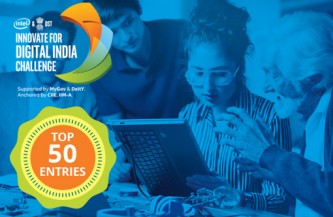Digital India – The Way Forward

One notable aspect of the Digital India programme is that unlike some other government schemes that are launched but never catch the imagination of the people, Digital India has attracted the attention of almost everyone, both within the country and abroad. This is not without reason. If there is potentially one scheme which can bring about transformational benefits and fundamentally alter almost every aspect of our national life including the way citizens interact with not just the government but with each other, it is the Digital India programme.
As the nodal ministry tasked to anchor the implementation of this vision of the Prime Minister Shri Narendra Modi across all of government, we are constantly seeking, strategising, planning, formulating and evaluating ways by which we can strive not only to achieve the stated goals but indeed surpass them.
In a large and diverse country like India, it is not only the introduction of new initiatives, but the ability to rapidly execute and to scale up programmes to reach out to our 1.25 billion citizens, that is central to achieving success. How do we achieve this scale with speed? How do we meet ever rising aspirations of the citizens? How do we do that with the alacrity with which the citizens expect us to deliver? Inspite of constraints of connectivity, how do we carry these transformational programmes to the last person in the last village to reduce the asymmetry of information and knowledge, which leads to an asymmetry of opportunity? These are some of the thoughts that have kept me occupied ever since I assumed the office of Secretary of this Department in September this year.
Many good applications are already in place but their spread and reach needs to be rapidly ramped up. Solutions like digital locker, e-sign, e-hospital and My Gov have proved their usefulness and provide opportunity for up scaling. In addition, the following initiatives are planned to expand the reach of Digital India, keeping in mind limitation placed by availability of high speed broadband connectivity.
- Common Services Centres (CSC) are being scaled up to all gram panchayats where any kind of connectivity is available to offer electronic services closer to home in rural areas. Approximately two lac CSCs will be made operational by March, 2016 as part of this initiative.
- Aadhaar enrolment of all residents above the age of 18 years is expected to be completed by the end of the year through a massive drive. Further, seeding of Aadhaar is being rapidly done in major databases like Liquefied Petroleum Gas (LPG), Electoral Cards, National Rural Employment Guarantee Act (NREGA), Indira Indira Awaas Yojana (IAY), Public Distribution System (PDS), Pradhan Mantri Jan Dhan Yojana (PMJDY), National Social Assistance Programme (NSAP) of scholarships for the needy, to mention a few. This would eliminate ghost beneficiaries from government databases. Authentication online, in real time, to establish the identity of citizens will facilitate direct benefit transfer to bank accounts leading to enhanced convenience for beneficiaries and plugging leakages of tax payers’ funds to the tune of thousands of crores.
- To carry Digital India applications beyond the hundred million privileged English language speakers, a large programme for providing access to e-Gov applications in Indian languages has been drawn up for priority implementation. Government websites and portals are being converted to ensure the services & information is available in multiple Indian languages as well. Local language corpora resources like text corpus, speech corpus, word net, parallel word lists are being developed for 22 Indian languages by sharing these resources and using an open data, crowd sourcing model.
- Leveraging Mobile Connectivity – Today, mobile networks coupled with the rapidly growing number of smart phones provide internet services over a very wide area and broadband connectivity to a large and growing number of people. To use this network for making e-Gov applications available across the country, all important services are being enabled through mobile platforms. Mobile Apps are also being developed for important services to improve the ease of access. To make this happen, soon all mobile phones manufactured in our country will support multiple Indian languages.
- ePayments – A work plan has been prepared to make all government payments cashless over the next year. Technical support is being provided to Government departments including facilitating use of Pay Gov-India platform to start and expand electronic payments and receipts. The Apex Committee on Digital India has decided that all Ministries/Departments shall ensure that at least 90% of all payments & receipts are cashless by December 2016.
The Department of Electronics & IT (DeitY) will continue to work, to seek & to find solutions to citizens’ digital needs. While doing so, it proposes to constantly engage with citizens on the important initiatives of Digital India. I will eagerly scan these pages in the hope that it will be a two-way dialogue where citizens and domain experts will give constant feedback and advice enabling us to realize the game-changing Digital India vision.
J.S. Deepak, IAS, is Secretary DeitY

















